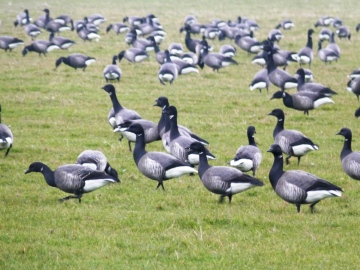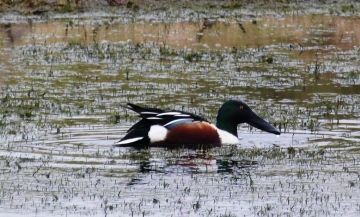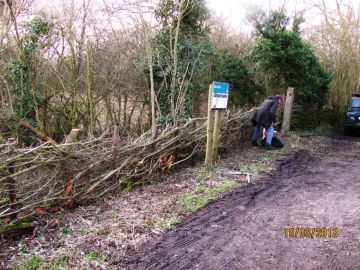It's a rum do. The end of March - only a few days from Easter - and Snowdrops are still in full bloom in the garden. Below average daytime temperatures since mid-January and a biting wind from the north or east throughout February and March has left us all feeling cold, cold, COLD! It has not done a lot for the wildlife either. At Blue House, the breeding Lapwings should be on eggs by now but there is hardly even a flicker of display as yet. Crows feed unmolested on the flooded area, whereas when there are clutches to defend they would be subject to continuous aerial assaults. If the cold wind drains heat from our bodies it does the same to them; they need to feed more than in a milder spring in order to maintain a condition fit for breeding. But the wind has a knock on affect. It retards plant growth - the hedgerow blackthorns are but a shadow of emerging bloom at present whereas, some years, their flowering is all but over by the close of March - and the lack of blossom, allied to the cold temperatures, inhibits the emergence of nectar and pollen seeking insects. The ground too is cold and wet - the water table, still high from last year's rains, tops up again after every heavy shower. Invertebrates are slow to emerge from winter. Less invertebrates means less food for the Lapwings at this critical time of year, which means they have less body fat to provide the energy needed for the onset of nesting and the cold, sodden ground, with no hint of warmth from the air, threatens the survival of the developing embryos. It is well that they have delayed laying but the longer this weather continues the less time they will have to rear a brood. In a normal year should the first, or even the second clutch fail, they will often try a third time but another week or two of this will limit their choices. As I said, it's a rum do and not only for Lapwings but lots of other wildlife as well. The ducks and geese have delayed departure to their northern breeding grounds, Brent Geese among them, over 2000 of which still reside on the farm, many feeding outside Nick's kitchen window' like the ones pictured here.

This fine drake Shoveler is more likely to be a resident and will soon be eyeing the females. He was feeding outside the New Hide and appeared to be 'shoveling' up mouthfuls of New Zealand Pygmyweed. If so, he need never go hungry, there are several tonnes of the wretched stuff on The Flood.

Cold springs are nothing new, of course, and two or three week spells of north or north-easterly winds are not unusual as late as April or May. But by then the days are longer and the sun is higher and high pressure systems more often bring blue skies than cloudy ones, as is not the case in the winter. I am not sure I can recall such a prolonged period of winds from the heart of Russia at this time of year before, though, unless it was in the infamous winter of 1963.
On a more cheerful note, volunteer work parties are one way of keeping warm; either digging up gorse bushes and young birches on heath-land at The Backwarden or layering hedges at Stow Maries Halt EWT Reserve. The one pictured may not be quite the standard achieved by the professionals at Highgrove but I am still pleased with my part in creating it!






















